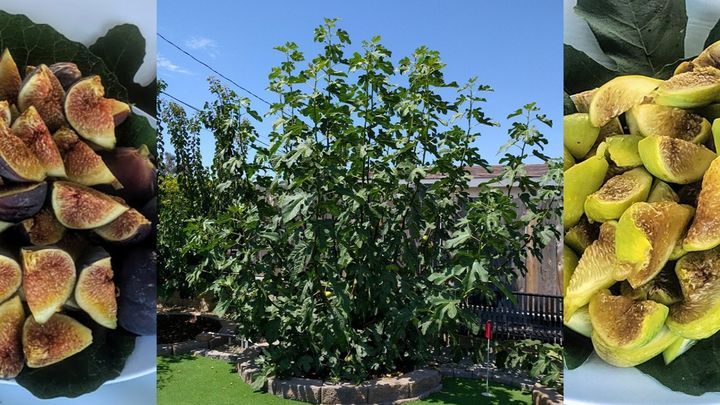
Help Solve Genetic Mysteries of the Fig
Donation protected
Overview:
Hi, I'm a mathematical horticulturist interested in the genetics of figs! My goal is to enable the community of fruit geneticists to develop a "genetic ID" that can identify varieties of figs and a "genetic fingerprint" that can determine the sexual type, flavor, and perhaps other characteristics by a simple genetic test of a leaf sample. The bottleneck has been a lack of whole-genome scans - an expensive process. I have contracted to obtain complete chromosome DNA scans of 15 carefully selected fig varieties + RNA scans of fruit on the best available equipment in the US. This data will be made publicly available to all on the NCBI data site. I could go it alone on the cost but I'd sure appreciate some assistance! Won't you help?
Technical Summary:
My goal is to determine a set of genetic markers which can be measured in a PCR test that will (a) uniquely identify F. carica cultivars and (b) identify morphology including sexual type (there are 12) and primary flavor (there are at least six). In addition, I hope to gain insights to markers distinguishing F. carica from F. palmata. To accomplish this I have selected 13 F. carica specimens with differing morphology plus two F. palmata cultivars for chromatin whole-genome sequencing. Six of the specimens are coming from NGCR Davis so they can be correlated with the coarse 15 SSR measurements taken there in 2009 which I re-evaluated last year (https://journals.plos.org/plosone/article?id=10.1371/journal.pone.0263715). A 2016 report by Mathi Thumilan details 206 markers for the Moraceae family of which 58 are applicable to F. carica and at least 41 to F. palmata (https://doi.org/10.1371/journal.pone.0162909). The primer sequences are provided in the publication. Hopefully they can be found within these new sequences. If so, they can be evaluated for suitability to the goals above. In addition I plan to use a large dataset from Kazuki Mori published in 2017 containing RNA sequences from 136 male and female F. carica specimens at the Fukuoka repository (https://doi.org/10.1038/srep41124). Overall it will be a collaborative effort involving researchers on several continents.
The sequencing will be performed by a robotic PacBio Sequel II device at the Arizona Genomics Institute. It is currently the most accurate device for nucleotide sequencing. The specimen leaf samples must first be processed in 1-2 weeks of laboratory procedures to isolate cell nuclei. It will then take the machine about 6-8 days per specimen. The total laboratory cost is $101,600.
For list of cultivars see: https://geneticdistance.org/2022PacBioSpecimens.pdf
Hi, I'm a mathematical horticulturist interested in the genetics of figs! My goal is to enable the community of fruit geneticists to develop a "genetic ID" that can identify varieties of figs and a "genetic fingerprint" that can determine the sexual type, flavor, and perhaps other characteristics by a simple genetic test of a leaf sample. The bottleneck has been a lack of whole-genome scans - an expensive process. I have contracted to obtain complete chromosome DNA scans of 15 carefully selected fig varieties + RNA scans of fruit on the best available equipment in the US. This data will be made publicly available to all on the NCBI data site. I could go it alone on the cost but I'd sure appreciate some assistance! Won't you help?
Technical Summary:
My goal is to determine a set of genetic markers which can be measured in a PCR test that will (a) uniquely identify F. carica cultivars and (b) identify morphology including sexual type (there are 12) and primary flavor (there are at least six). In addition, I hope to gain insights to markers distinguishing F. carica from F. palmata. To accomplish this I have selected 13 F. carica specimens with differing morphology plus two F. palmata cultivars for chromatin whole-genome sequencing. Six of the specimens are coming from NGCR Davis so they can be correlated with the coarse 15 SSR measurements taken there in 2009 which I re-evaluated last year (https://journals.plos.org/plosone/article?id=10.1371/journal.pone.0263715). A 2016 report by Mathi Thumilan details 206 markers for the Moraceae family of which 58 are applicable to F. carica and at least 41 to F. palmata (https://doi.org/10.1371/journal.pone.0162909). The primer sequences are provided in the publication. Hopefully they can be found within these new sequences. If so, they can be evaluated for suitability to the goals above. In addition I plan to use a large dataset from Kazuki Mori published in 2017 containing RNA sequences from 136 male and female F. carica specimens at the Fukuoka repository (https://doi.org/10.1038/srep41124). Overall it will be a collaborative effort involving researchers on several continents.
The sequencing will be performed by a robotic PacBio Sequel II device at the Arizona Genomics Institute. It is currently the most accurate device for nucleotide sequencing. The specimen leaf samples must first be processed in 1-2 weeks of laboratory procedures to isolate cell nuclei. It will then take the machine about 6-8 days per specimen. The total laboratory cost is $101,600.
For list of cultivars see: https://geneticdistance.org/2022PacBioSpecimens.pdf
Organizer
Richard Frost
Organizer
Vista, CA